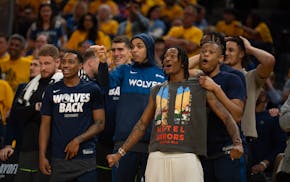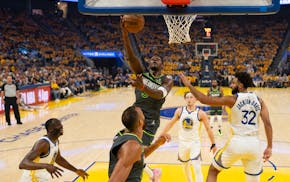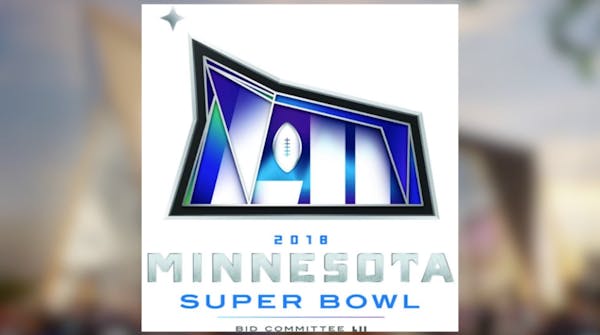The first neutral site for an NFL championship game came three decades before the Super Bowl era began 48 years ago.
In 1936, Boston Redskins owner George Preston Marshall moved the game against the Packers out of Fenway Park. Citing poor attendance — which he created by announcing his team's impending move to Washington, D.C., the following year — Marshall took the game to the Polo Grounds in New York.
Yeah, things have changed just a tad in the 78 years since Marshall became the only owner in NFL history to decline playing host to the NFL's championship game.
Tuesday, representatives from Minneapolis, Indianapolis and New Orleans will stand before 32 NFL owners in Atlanta and essentially grovel for the 52nd Super Bowl in February 2018. For Minneapolis, this elegant form of begging comes after already agreeing to build a $1 billion stadium and gathering enough corporate pledges to cover about $40 million in costs should its bid be accepted Tuesday afternoon.
Somewhere in Atlanta, 32 men just said, "It's good to be the king."
It's so good, in fact, that even Mother Nature ran out of bounds rather than cross the mightier NFL three months ago. By planting an unseasonably warm weekend between two crippling New York/New Jersey snowstorms, she saved not only the first outdoor, cold-weather Super Bowl but the dreams of future potential cold-weather venues as well.
A storm the week before Super Bowl XLVIII had the league talking about contingency plans that included moving the game to another day. Then, an early-morning storm hours after the game caused gridlock and canceled more than 1,000 flights into and out of the area.
Just imagine if the timing of either storm had been only slightly different. Imagine what the first "Super Bowl Monday" would have done to the perception of cold-weather cities as embraceable venues going forward. Imagine Richard Davis, co-chair of the Minneapolis bid committee, still saying this as a selling point for Super Bowl LII: "We're going to celebrate winter. And we should, because we do it well. Better than anyone."
Having 48 degrees at kickoff and a high of 55 during Super Bowl XLVIII changed everything. The experiment was considered so successful that owners of northern teams with open-air stadiums began immediately throwing elbows to be next in line. New England's Robert Kraft, Philadelphia's Jeffrey Lurie, Washington's Dan Snyder and Denver's Pat Bowlen are among those who want their cut.
And who can blame them? After playing host to only five of the first 48 Super Bowls, cold-weather owners and their cities hold more clout than ever. Their Super Bowls have been successful and profitable, and they will continue to serve as the arm-twisting incentive for all cities to keep building, updating and rebuilding stadiums in perpetuity.
Estimates on the local economic impact vary wildly from the league's $600 million figure to less than 10 percent of that. But there's no debating that local businesses profit exponentially from NFL out-of-towners. As for the Super Bowl, you can multiply that to the point where hotel receptionists might as well say, "Stick 'em up!" upon arrival.
Now that it appears cold-weather venues will have a consistent seat at the NFL's money trough, let's analyze just how much the weather really matters, especially when there's a dome to preserve the actual game.
Well, as someone who has been to 10 of the past 11 Super Bowls, let's just say the weather can be downright lousy in a lot of places.
It was cold in Houston. It was a cold and rainy week Jacksonville. It rained about an inch during a Super Bowl in Miami. An ice storm shut down Dallas for the week and injured six workers at Cowboys Stadium. Heck, it even rained all week in the desert when the game was in Arizona.
The fairest way to decide the venue, of course, would be best record. But that hasn't happened in almost half a century and never will again. The game is too big, which is why every city deserves to make its pitch. Even the one that had a gameday low of minus 7 degrees this year.
Mark Craig • mcraig@startribune.com

Scoggins: Timberwolves' Game 3 win spins from willingness to get 'right down there in the mud with them'

Backup center Dorka Juhász won't play for the Lynx this season

Timberwolves savor a San Francisco treat with surge past Warriors

Analysis: Minnesota United plays it blasé, but there's no diminishing a win over Messi, Inter Miami

